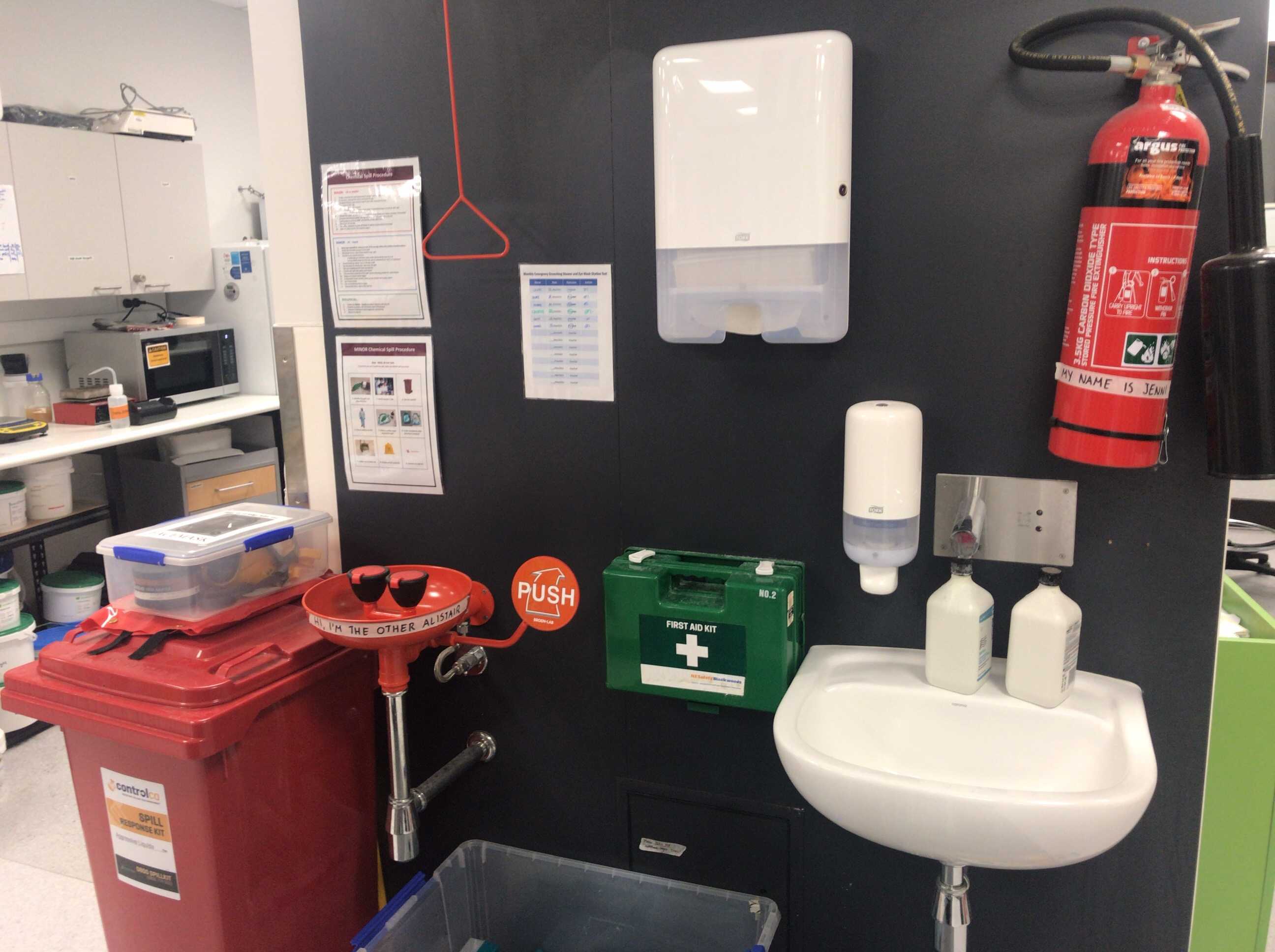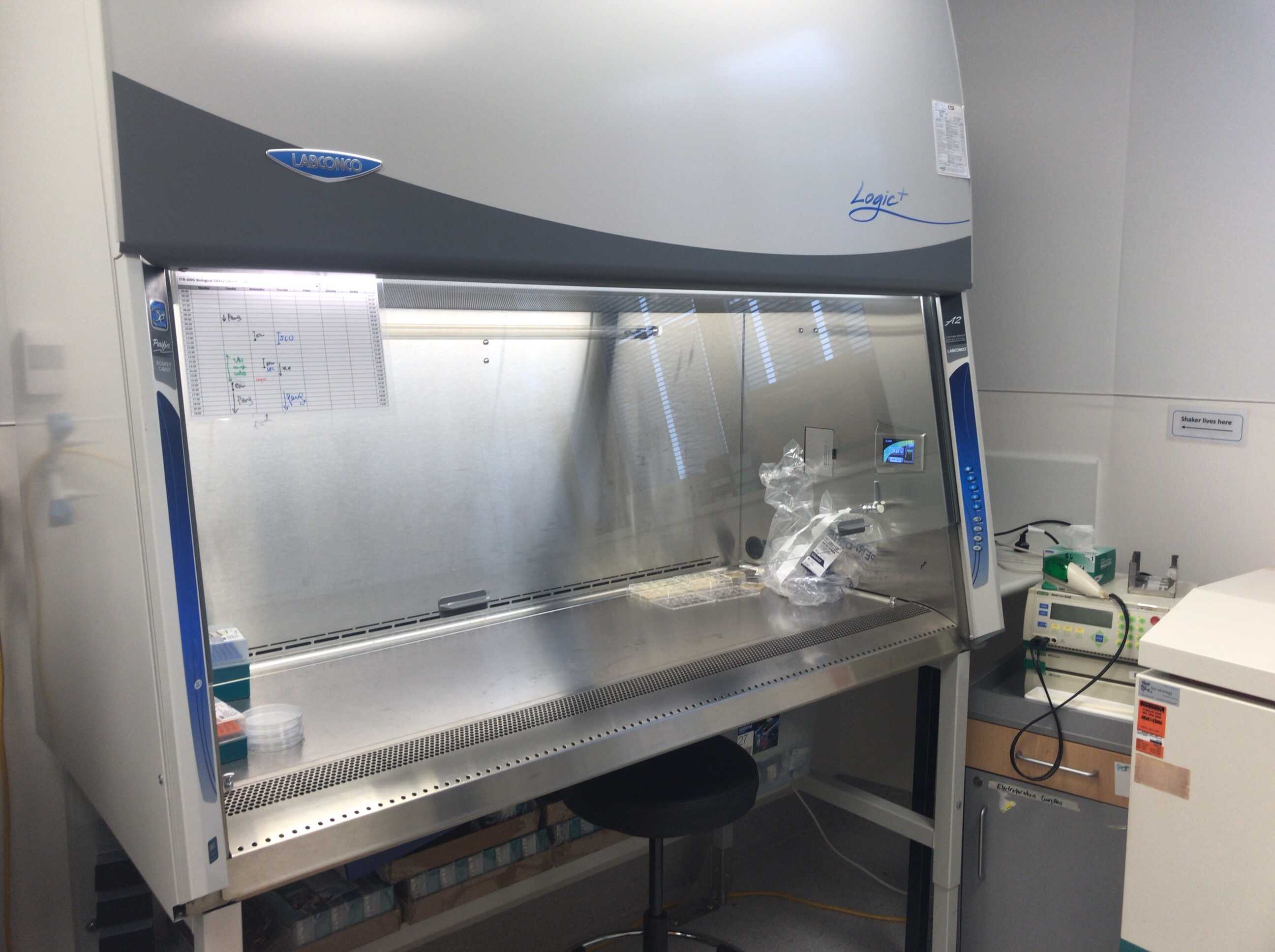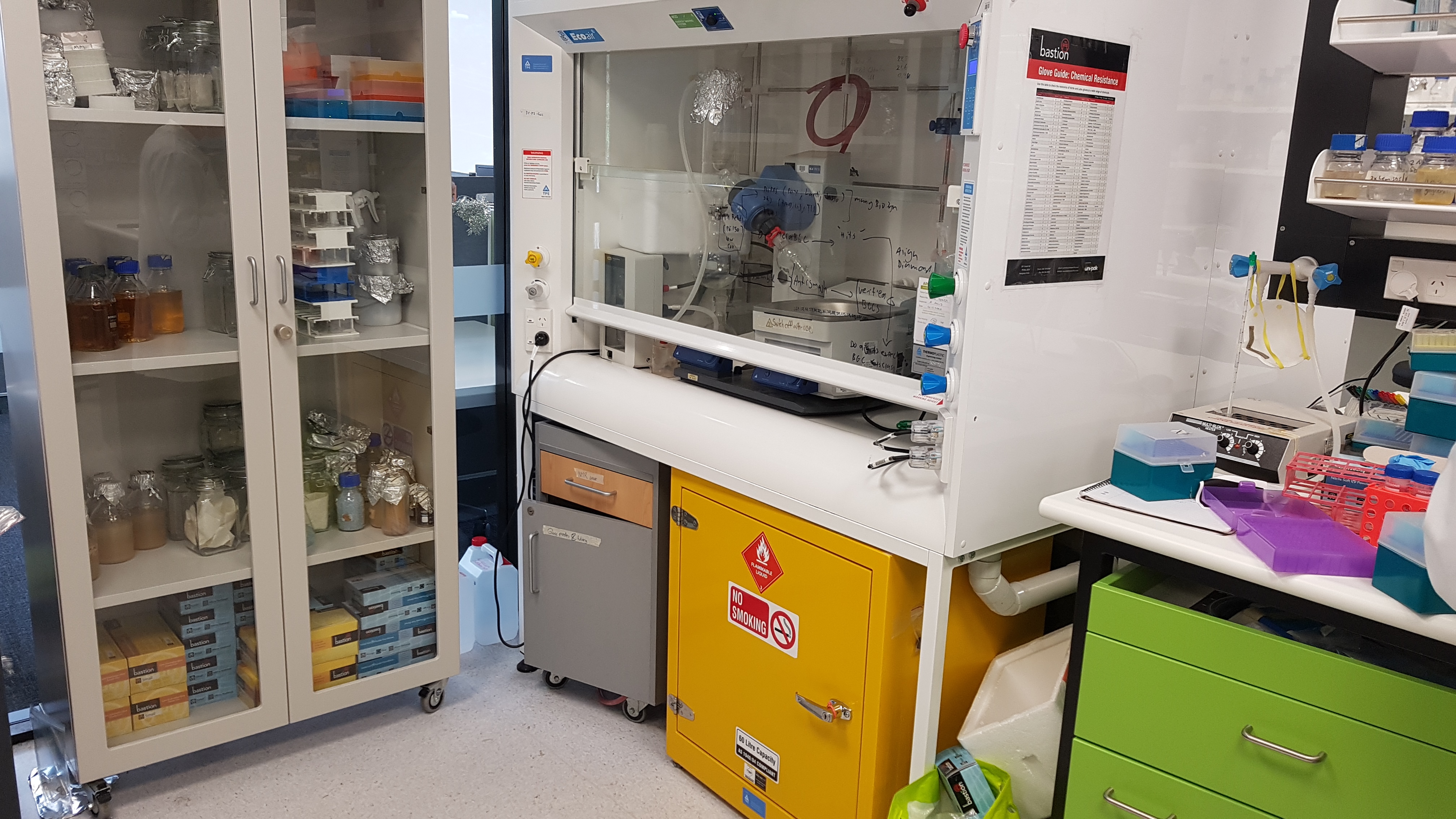Safety
The team at VUW has a strong emphasis on safety in the laboratory, originating from both chemical and biological hazards. The lab can be a dangerous place, with hazardous substances, genetically modified organisms, and people in motion. Safety procedures are in-place to ensure the wellbeing of our team, other lab members, and the wider environment of Te Whanganui-a-Tara and Aotearoa.
The rules we are required to observe can be found in the following documents:
Our laboratory
General safety hazards
Accidents can happen and we have safety equipment available to minimize damage should they do. It's mandatory to wear the minimum of a lab-coat, gloves, and covered shoes when working in our laboratory. Other PPE is also essential when performing particular tasks that are deemed more hazardous, such as safety glasses when handling corrosive chemicals or cryo-gloves when handling liquid nitrogen.
Chemical hazards
HSAW 2015 defines the correct storage, usage training, and disposal of chemicals in the laboratory. This involves segregating incompatible substances from one another (e.g., oxidizing substances, acids, bases) in appropriate storage, clear labelling of substances and waste, accurate records of currently held substances and waste, emergency procedures and access to safe methods of use (SMOUs) and Material Safety Data Sheets (MSDS').
In our laboratory, we are required to perform the following actions when working with hazardous substances:
- read the relevant SMOU(s) and MSDS' and have an experienced user help you use an unfamiliar substance.
- store flammables in a flammables cabinet.
- store corrosives in a corrosives cabinet.
- wear correct PPE for the substances being worked with.
- work with volatile, acidic, basic, and toxic hazardous substances in a fume hood.
- clearly label all waste substances to ensure it is disposed of correctly.
Biological hazards
Our lab is a PC2 containment laboratory, so according to New Zealand legislation Hazardous Substances and Safety at Work 2015 we can work with category 1 and 2 host microorganisms (HSNO 2003, regulations 7.1 and 7.2), provided we have the correct permits to do so. An organisms containment level is based on its potential for harm to users and ability to escape the lab. In addition, HSNO 2003 defines low risk genetic modification as those activities that do not increase a host organisms virulence or ability to escape the laboratory (HSNO 2003, regulations 5.1 and 5.2). Our proposed research only involves category 1 host organisms and category A genetic modifications. Therefore, the physical containment standards of our laboratory are sufficient for our proposed research activities
The waste streams in our laboratory ensures that no biological or chemical material leaves the lab, reducing the chance of accidental escape and exposure to hazardous materials. The waste streams are as follows:
- General (or domestic) Waste - normal bins that take any waste that is not a biological or chemical hazard, for example, paper towels (not contaminated with hazardous waste), clean plastics, etc.
- Bio-hazard Waste - large yellow wheelie bins only take hazardous waste of biological origin (e.g. bacteria, tissue samples, etc) and only when it has been rendered inactive first by bleach or autoclaving.
- Chemical Hazardous Waste - chemical waste product that is classified as Flammable, Corrosive, Reactive or Toxic must enter the SBS Hazardous Waste stream.
To ensure these rules are being adhered to, our lab is routinely audited by the University and annually by MPI inspectors.
Safe Project Design
Our proposed project had the following safety features:
- Both E. coli and S. elongatus are category 1 host organisms, so present minimal risks to team member health and escape potential.
- The target transgenes will not modify the virulence of the host organisms nor increase their escape potential - so the genetic modification is considered 'low-risk'.
- The tropine pathway does produce toxic metabolites (tropine LD50 = 1050 mg/kg in rats), but we will not be adding genes to our hosts that could produce further tropane alkaloids that are more toxic (e.g., atropine, scopolamine). Furthermore, containment procedures, small culture volumes (25 ml) and PPE will minimise exposure to laboratory members.
- Host organisms will be grown only on selective media, so will likely lose transgenes if these are not selected for.
- Our CRISPR experiment will have limited off-target effects by designing efficient sgRNAs, reducing the potential for unexpected genetic modifications.
Here are some photos of safety equipment from our lab!








